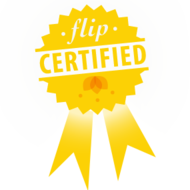It's messy. It's sticky. It's sugary. It's also one of the most memorable and fun labs that we do all year in science. In order to model the way the three different types of rock form, we take a day to make three treats, then describe how each treat is related to either igneous, metamorphic or sedimentary rock.
Each student receives a lab packet that carefully prescribes how to complete each station of the lab and also guides them to making observations about their models. The classroom is divided into three stations, two of which should be manned by a teacher. Luckily, this year we have a student teacher working with us in addition to the pair of us, so we had a teacher at each station.
At the jelly sandwich station, we make simple jelly sandwiches (we have a few peanut allergies in the class so we skipped the PB) then record our observations about the color, appearance and texture of the bread and the jelly. Then, the sandwiches get smushed! We place the sandwiches in a plastic baggie and pile a few textbooks on top. After a few moments, we look back at the sandwiches and record further information. Both the jelly and the bread have changed their texture and appearance drastically. These sandwiches are intended to model the drastic change caused by heat and pressure in metamorphic rocks.
At the chocolate patties station, a teacher assists the kids in melting molding chocolate in the microwave. We chose to mix colors to make a marbled effect, but this is optional. Each student gets to spoon a bit of the mixture into a small Dixie cup. Then they are allowed to cool. While they cool, students record observations in their notes. The chocolate patties represent igneous rocks in that they are made of a molten, melted material that cools over time.
Finally, a teacher is also ready and waiting at the crisp rice treats station. The easiest way to make the treats here at school is with a microwave. Melt about a teaspoon pat of butter in a large bowl, then add about 8 or 9 regular-sized marshmallows. Mix them around until they are coated with butter. Microwave the marshmallows for about a minute until they are warm and "puffed up." Then add about a cup or cup and a half of cereal (I always eyeball it) and let the students mix up the "sediments." We also added some mini M&Ms just to make the sediments a little more interesting. Finally, another student can press the mixture into a large bar pan with a greased spatula. I usually divide my class into three groups, each group filling the pan about a third. In the end, there is a full pan of treats. These crisp rice bars represent sedimentary rocks in that the smaller "sediments" were bonded together through compaction and cementation.
Once the students have visited all three stations, they are ready to answer the reflective questions in the lab packet about which treat represented each type of rock. Usually, by this time, the crisp rice treats are cooled enough to cut up and distribute. Most students do not want to each the jelly sandwiches, and I typically send the chocolate patties home. (We don't need that much sugar right after lunch!)
Many of the 7th, 8th and 9th graders who have moved on from my class still remember this lab fondly, and it is certainly one of the favorites of current 6th graders. We also have teachers come from all over the building to have a sweet treat in the afternoon with our students. While there is certainly some scientific material to be learned from this lab, the best part is seeing students get excited about science!
Subscribe to:
Post Comments (Atom)









0 comments:
Post a Comment